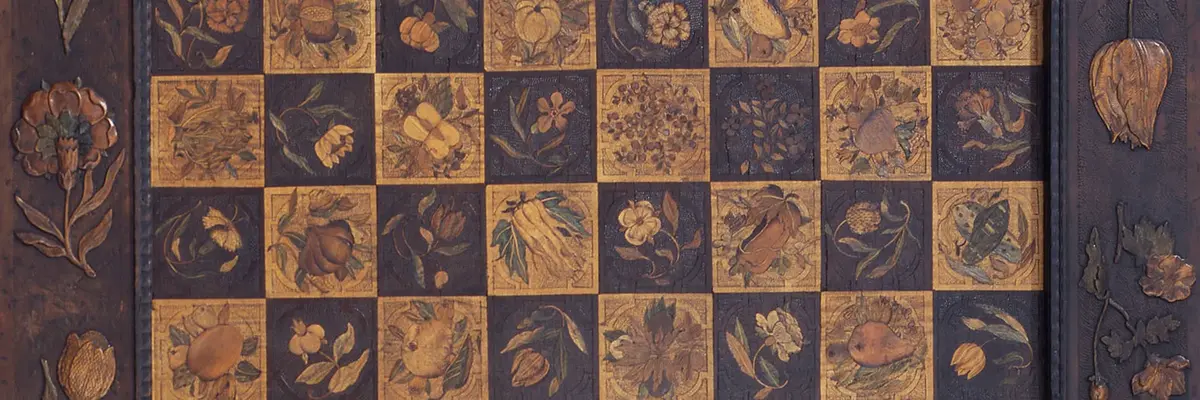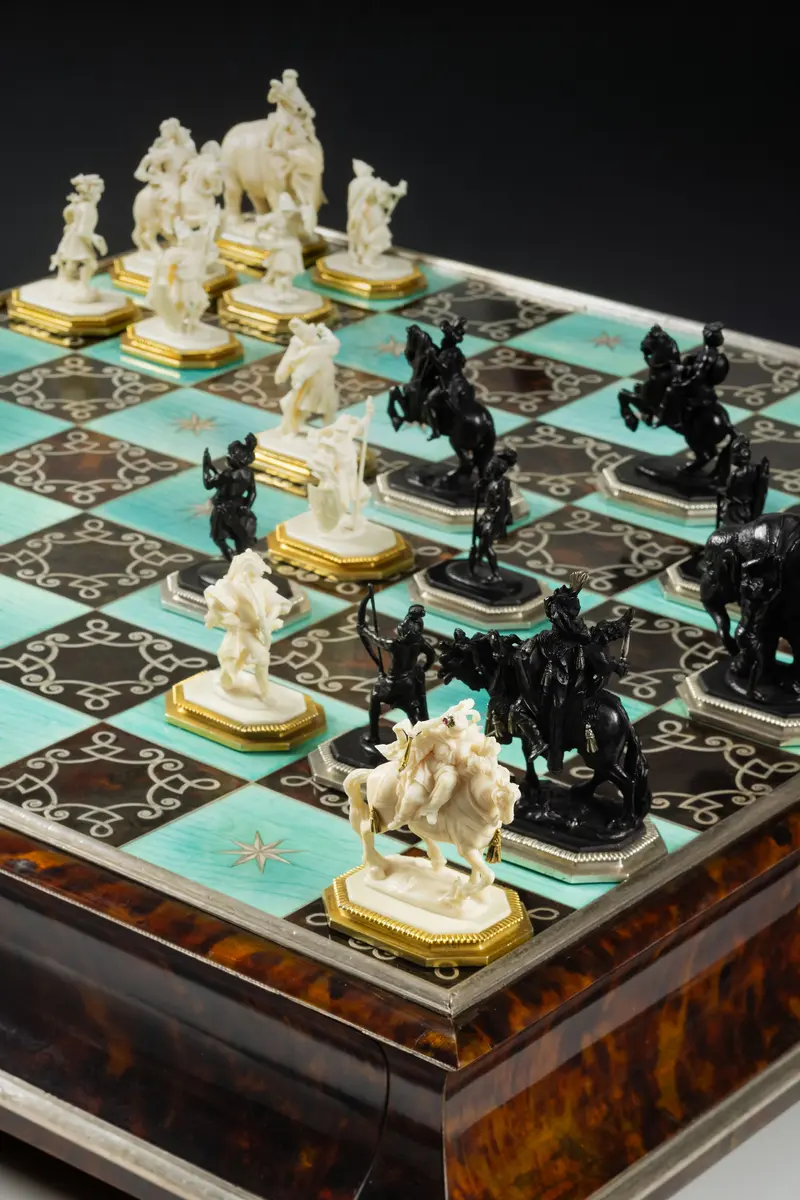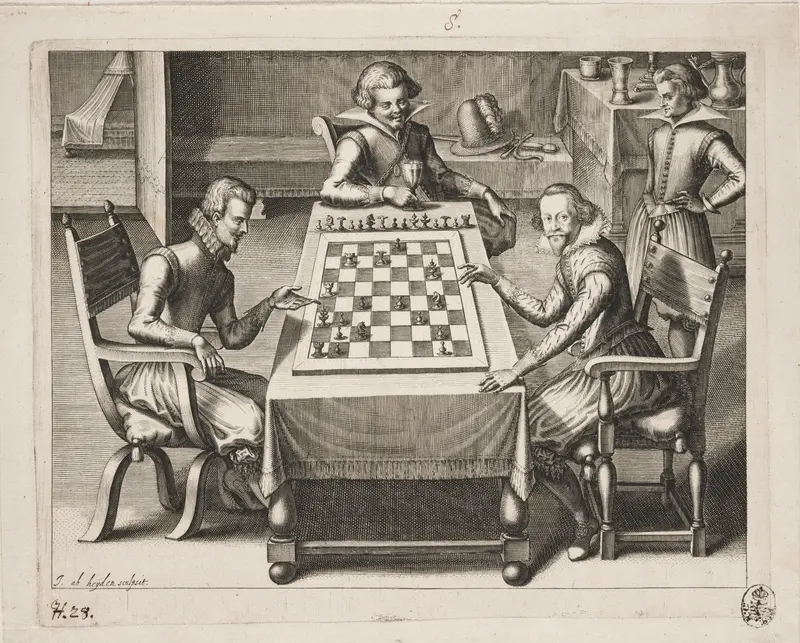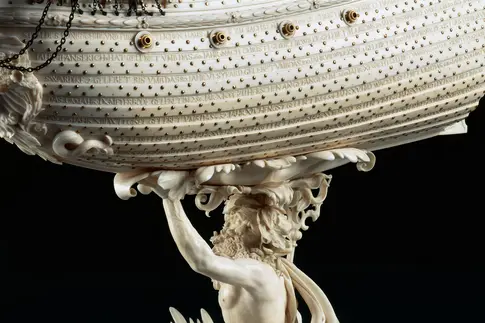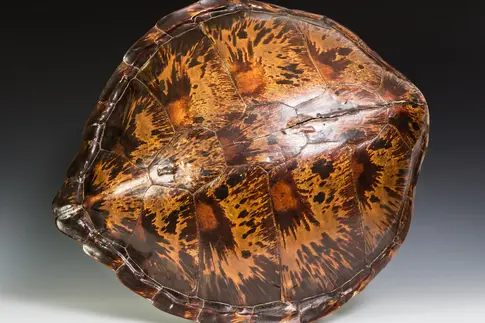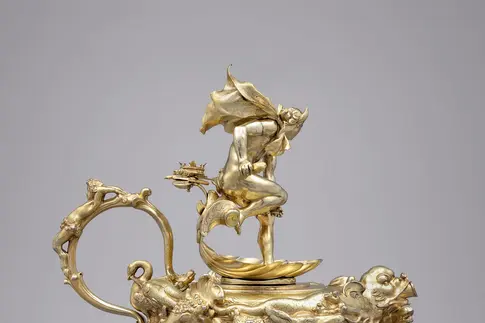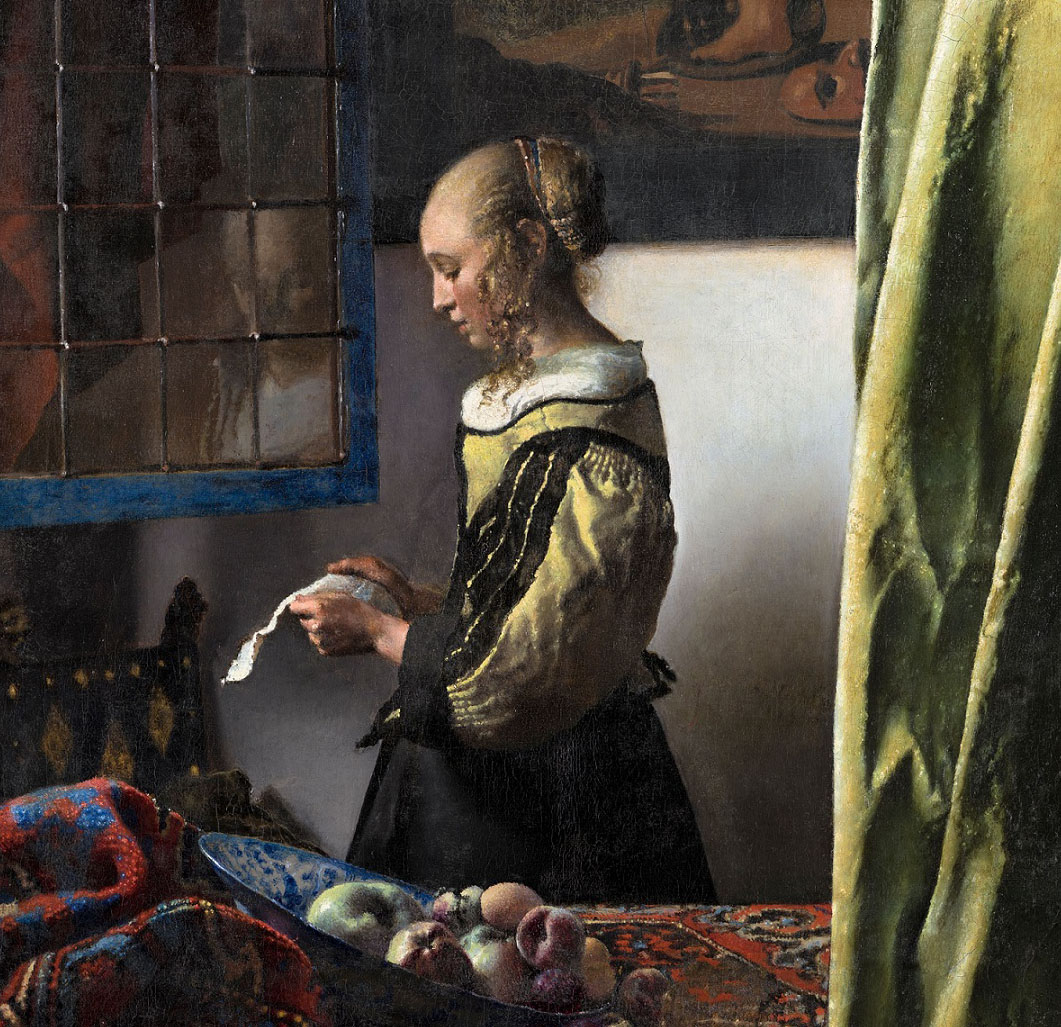Board game culture
They were not only entertaining and sociable pastimes but also promoted the development of tactical skills and logical thinking. These were vital qualities for the rulers of a territory. Chess, which can be traced back to the sixth century, played a particularly important role because it was regarded as a simplified replication of a real battle situation. Today, the Grünes Gewölbe houses a particularly splendid chess set from the time of August the Strong. In the early sixteenth century, board game boxes made of precious materials increasingly found their way into the art and curiosity cabinets of European courts.
